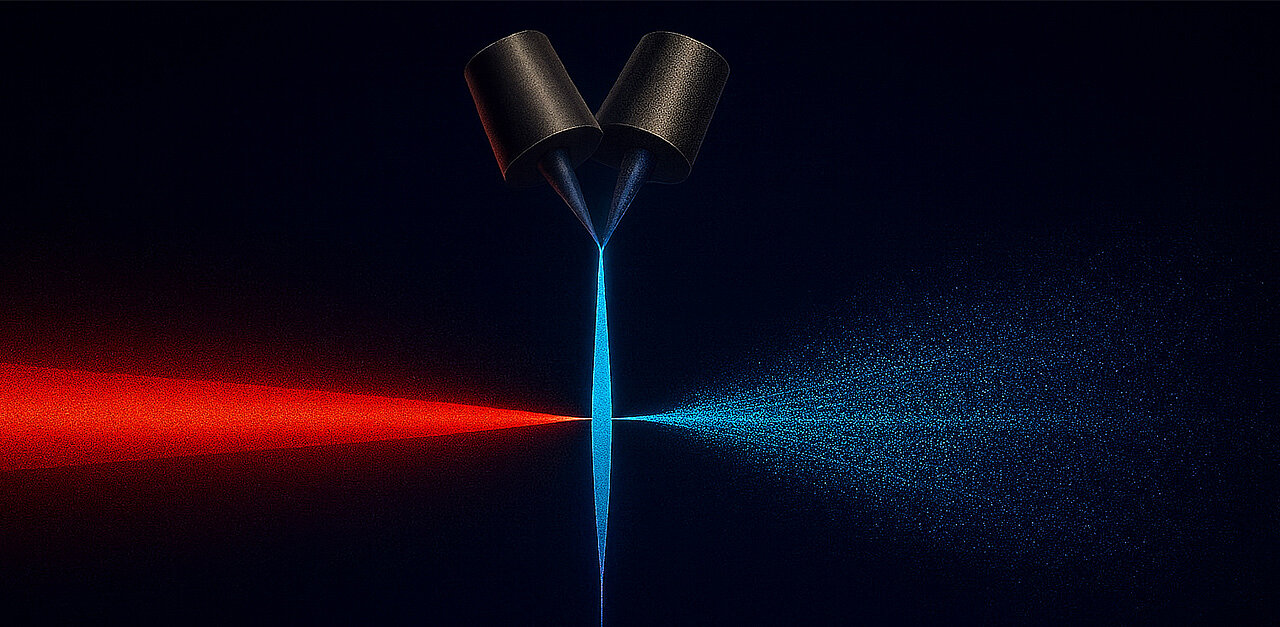Particle acceleration using powerful laser pulses is becoming increasingly important in opening up new avenues for medical and biological applications. To this end, the Centre for Advanced Laser Applications is conducting fundamental research into the conditions under which efficient acceleration of ions, for example for irradiation, is possible.
Now, a team led by Prof. Jörg Schreiber has significantly improved the application possibilities of laser plasma acceleration technology for energetic proton bunches. In an experiment, the researchers focused laser pulses from the ATLAS-3000 system onto thin flowing water films using an effect that one sometimes also observes when doing the dishes. This enabled the team to generate up to 400 proton bunches. The goal now is to catch up with the repetition rate of the 27-femtosecond laser pulses at peak power of over 1000 TW, that is to generate energetic proton bunches every second.
With their latest light-water interaction experiments, the LION team has achieved proton acceleration at high repetition rates and to velocities enabling radiation chemistry studies that are relevant for example in medicine and biology.
Image: Lianren He
Image description: Strong laser pulses incident from left (red) hit a very thin film of floating water and produce a proton beam (blue).
Original publication:
Stable high-energy proton acceleration with water-leaf targets driven by intense laser pulses
L. R. He, M. Bachhammer, F. Balling, S. Biswas, L. Doyle, S. Gerlach, I. Hofrichter, M. Kharbedia, J. Liese, M. De Marco, T. Pohle, A. Praßelsperger, A. K. Schmidt, F. Schweiger, M. Kling, S. Karsch, J. Schreiber
Physical Review Research 7, 023190 (2025)

